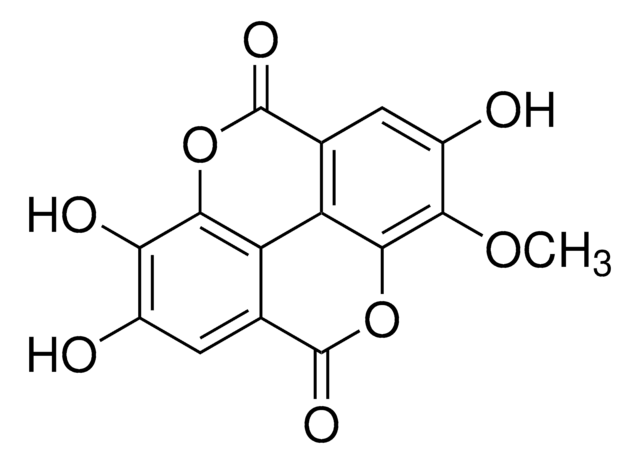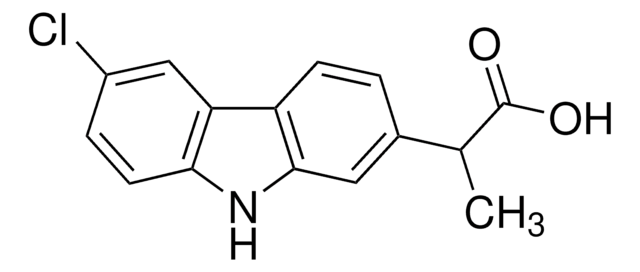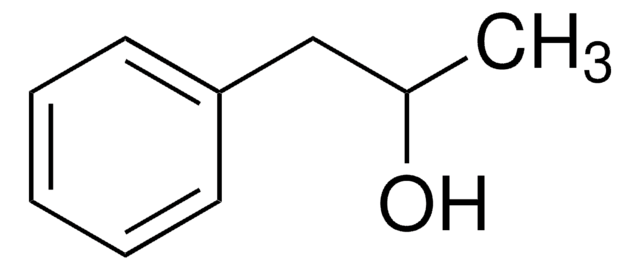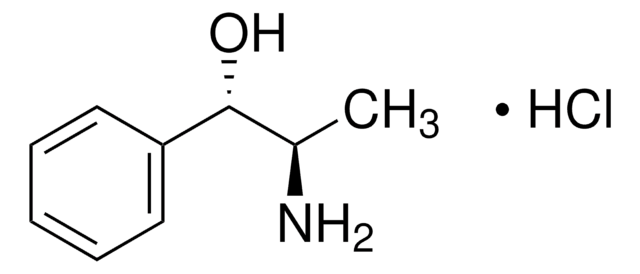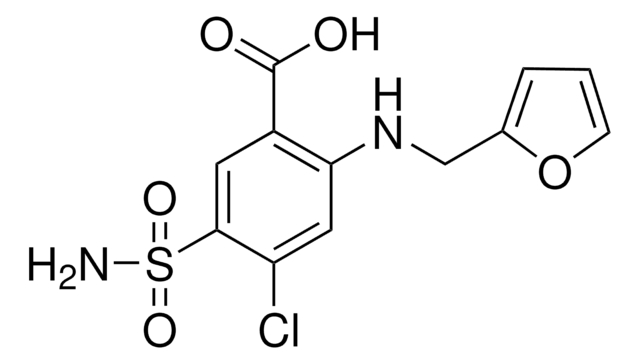C3196
S(−)-Cathinone hydrochloride
Sinonimo/i:
α-Aminopropiophenone hydrochloride, S(−)-2-Amino-1-phenyl-1-propanone hydrochloride
About This Item
Prodotti consigliati
Stato
powder
Livello qualitativo
Controllo stupefacenti
USDEA Schedule I; Home Office Schedule 1; stupéfiant (France); kontrollierte Droge in Deutschland; regulated under CDSA - not available from Sigma-Aldrich Canada; psicótropo (Spain); Decreto Lei 15/93: Tabela IIA (Portugal)
tecniche
HPLC: suitable
gas chromatography (GC): suitable
Solubilità
H2O: soluble
ethanol: soluble
applicazioni
forensics and toxicology
pharmaceutical (small molecule)
veterinary
Temperatura di conservazione
2-8°C
Stringa SMILE
Cl.C[C@H](N)C(=O)c1ccccc1
InChI
1S/C9H11NO.ClH/c1-7(10)9(11)8-5-3-2-4-6-8;/h2-7H,10H2,1H3;1H/t7-;/m0./s1
HPZCAKYHISJOIK-FJXQXJEOSA-N
Descrizione generale
Azioni biochim/fisiol
Avvertenze
Warning
Indicazioni di pericolo
Consigli di prudenza
Classi di pericolo
Acute Tox. 4 Oral - Eye Irrit. 2 - Skin Irrit. 2 - STOT SE 3
Organi bersaglio
Respiratory system
Codice della classe di stoccaggio
11 - Combustible Solids
Classe di pericolosità dell'acqua (WGK)
WGK 3
Punto d’infiammabilità (°F)
Not applicable
Punto d’infiammabilità (°C)
Not applicable
Dispositivi di protezione individuale
dust mask type N95 (US), Eyeshields, Faceshields, Gloves
Scegli una delle versioni più recenti:
Possiedi già questo prodotto?
I documenti relativi ai prodotti acquistati recentemente sono disponibili nell’Archivio dei documenti.
Il team dei nostri ricercatori vanta grande esperienza in tutte le aree della ricerca quali Life Science, scienza dei materiali, sintesi chimica, cromatografia, discipline analitiche, ecc..
Contatta l'Assistenza Tecnica.